47:40
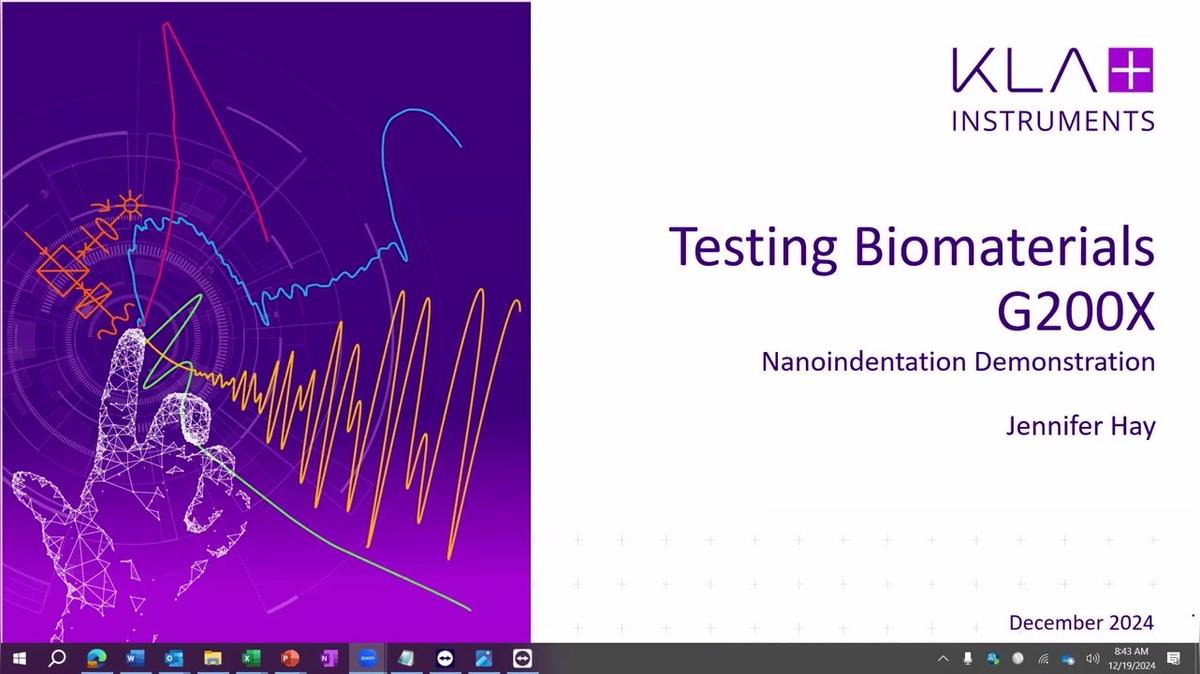
Jennifer Hay of KLA Instruments demonstrates how to test bio or other soft materials using nanoindentation on the Nano Indenter® G200X.
54:23
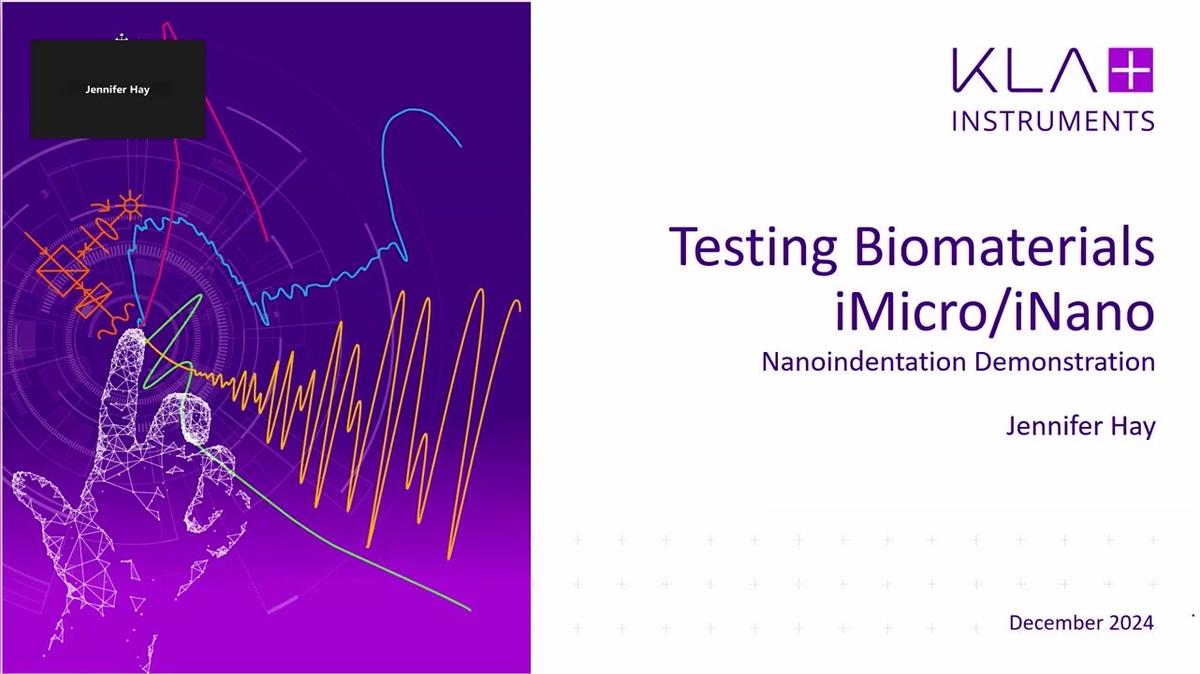
Jennifer Hay of KLA Instruments demonstrates how to test bio or other soft materials using nanoindentation on the iMicro or iNano nanoindenter.
59:27
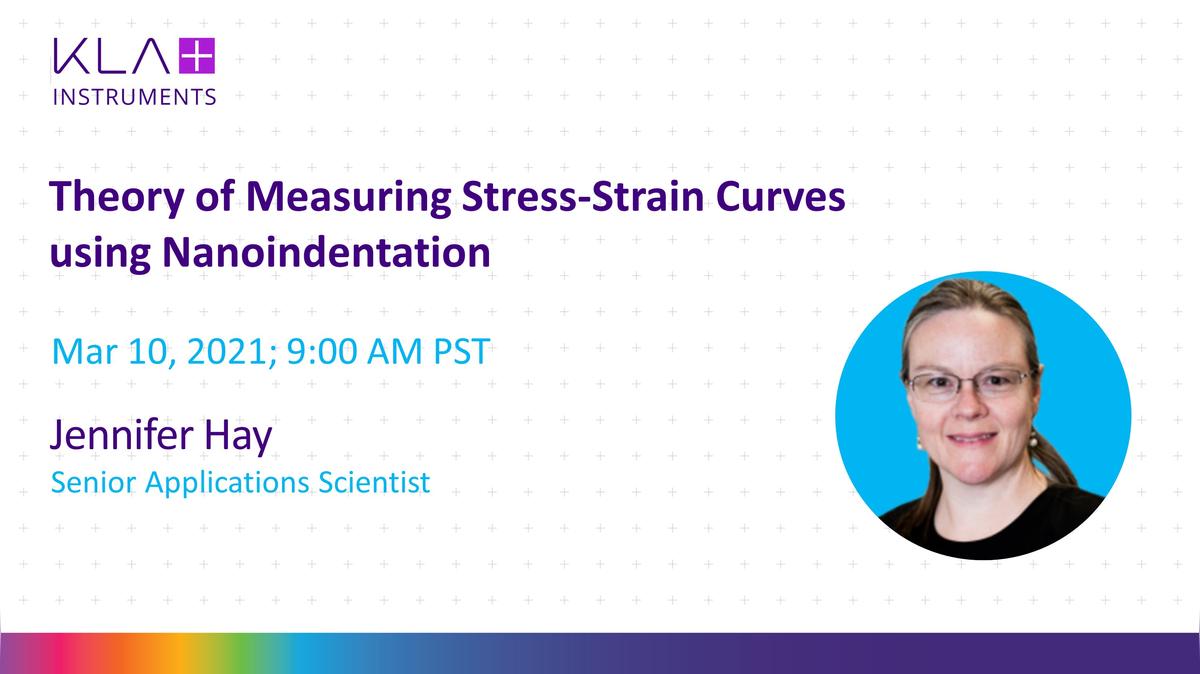
Nanoindentation is a common technique for measuring the Young’s modulus and hardness of metals. With recent advancements, nanoindentation can now be used to measure the entire stress-strain curve, even within a single metal grain. Join Sr. Application Scientist Jennifer Hay for a discussion of the theory behind this new measurement, and how nanoindentation measurements of force, displacement, ...
58:29

3D printing is the disruptive manufacturing method of the 21st century. In many ways, it is inferior to traditional methods of casting and machining, because microstructure and defects are not well understood or controlled. Yet, the technique is irresistible due to its speed, simplicity, and portability. High-speed nanoindentation is a critical tool for understanding the link between microstruc...
01:00:15
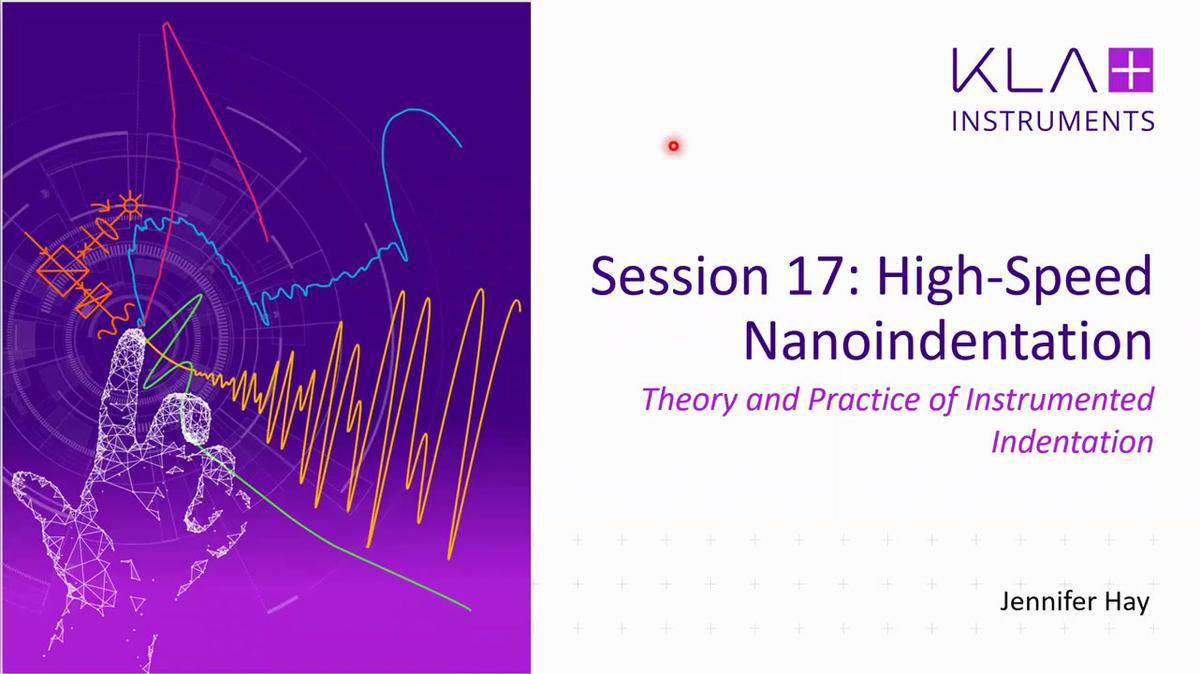
With careful attention to instrumentation and software, nanoindentation experiments can be accomplished at a rate faster than one second per indent. High-speed indentation opens new doors for statistical analysis and mechanical-properties mapping.
51:18

Mr. Crawford (former manager of the materials-testing laboratory at Johns Hopkins University) shows how to prepare a porous metal for high-speed nanoindentation. He provides recommendations for equipment and demonstrates all aspects of metallographic mounting and polishing.
51:33
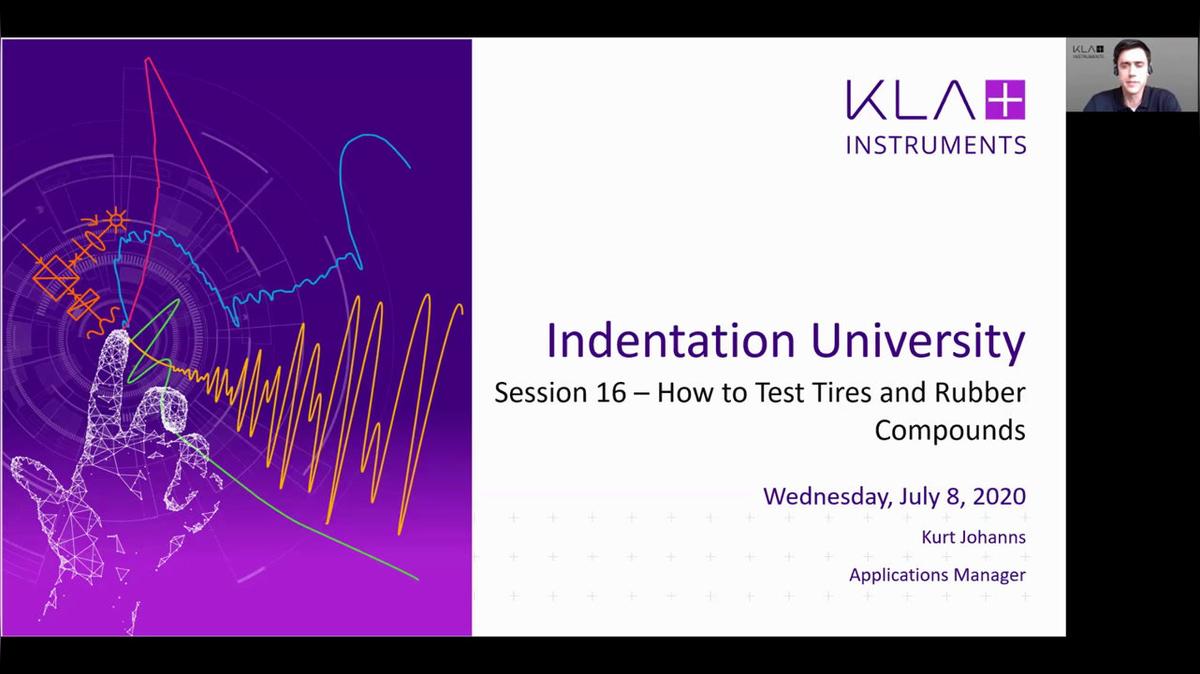
Traditional testing of laminate layers in a tire requires extensive dissection and can negatively impact the results. ProbeDMA™ eliminates the need to individually dissect the tire layers and allows the quantification of viscoelastic properties with high spatial resolution across layers and at interfaces. This session is a live demonstration of nanoindentation with the KLA nanoindenter to chara...
01:00:52
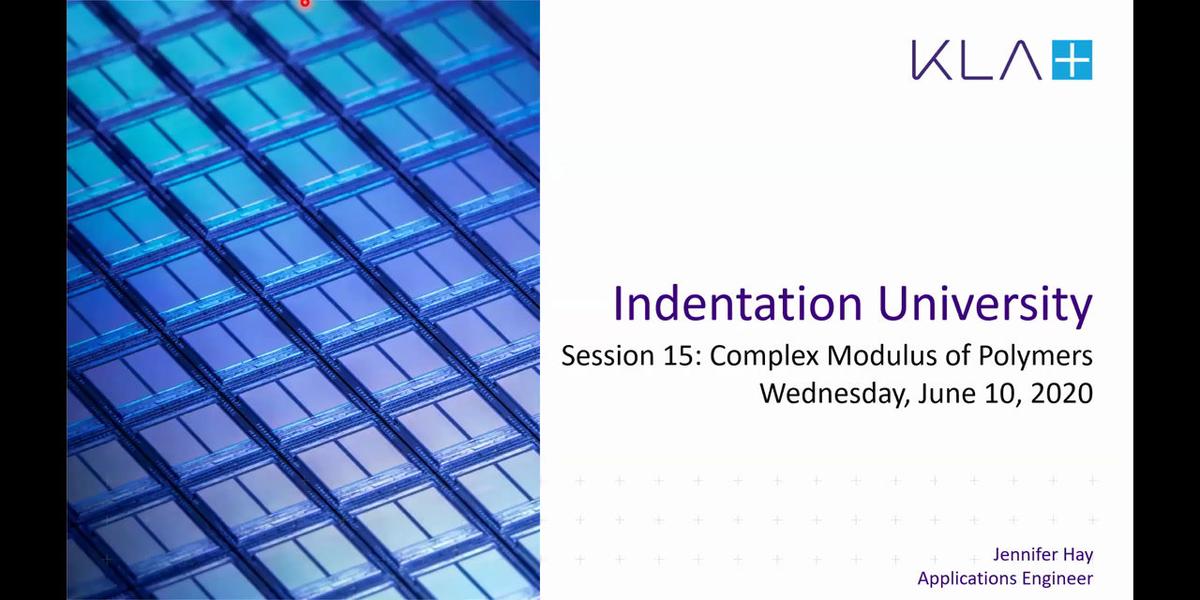
Polymers are exceptionally complex materials—mechanical properties depend on chemistry, processing, and thermo-mechanical history. Instrumented indentation testing dramatically simplifies the mechanical characterization of polymers, because samples can be small and minimally prepared. On bulk materials, values for storage and loss modulus measured by indentation agree well with values measured ...
01:02:45
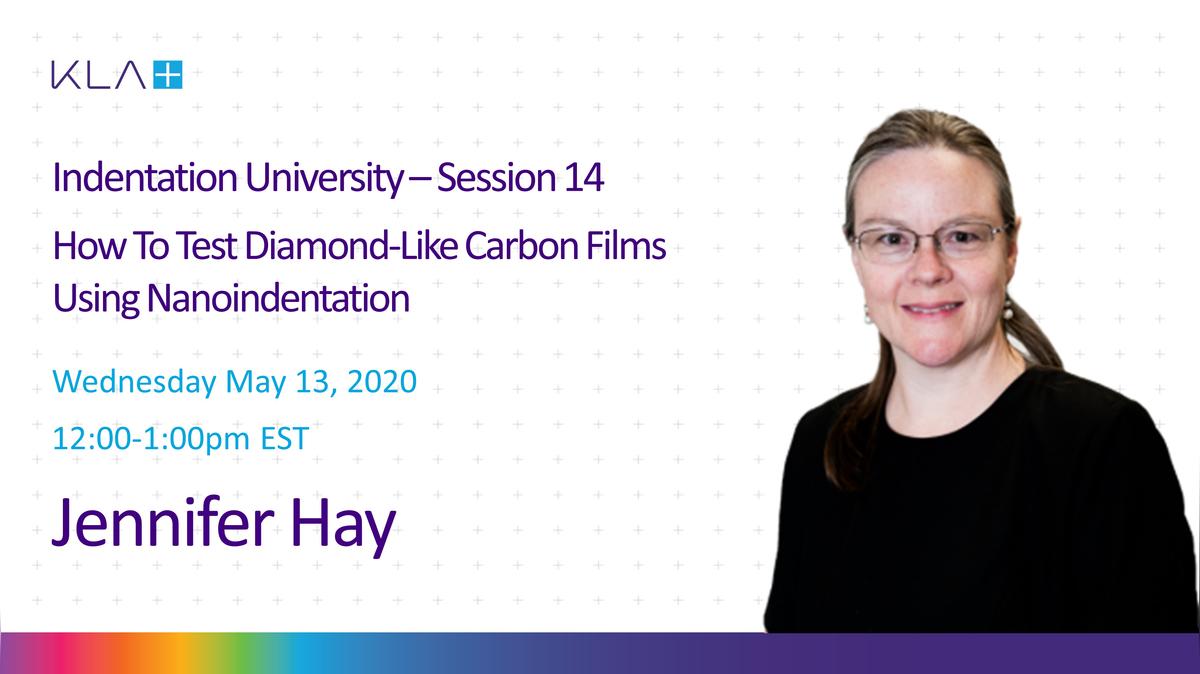
The first and most enduring application of nanoindentation is the characterization of hard coatings designed for mechanical and chemical protection of an underlying material. Diamond-like carbon is a common coating of this kind, with typical coating thickness being less than 100nm. This session is a live demonstration of nanoindentation with the KLA iNano, optimized for very shallow nanoinden...
01:08:06
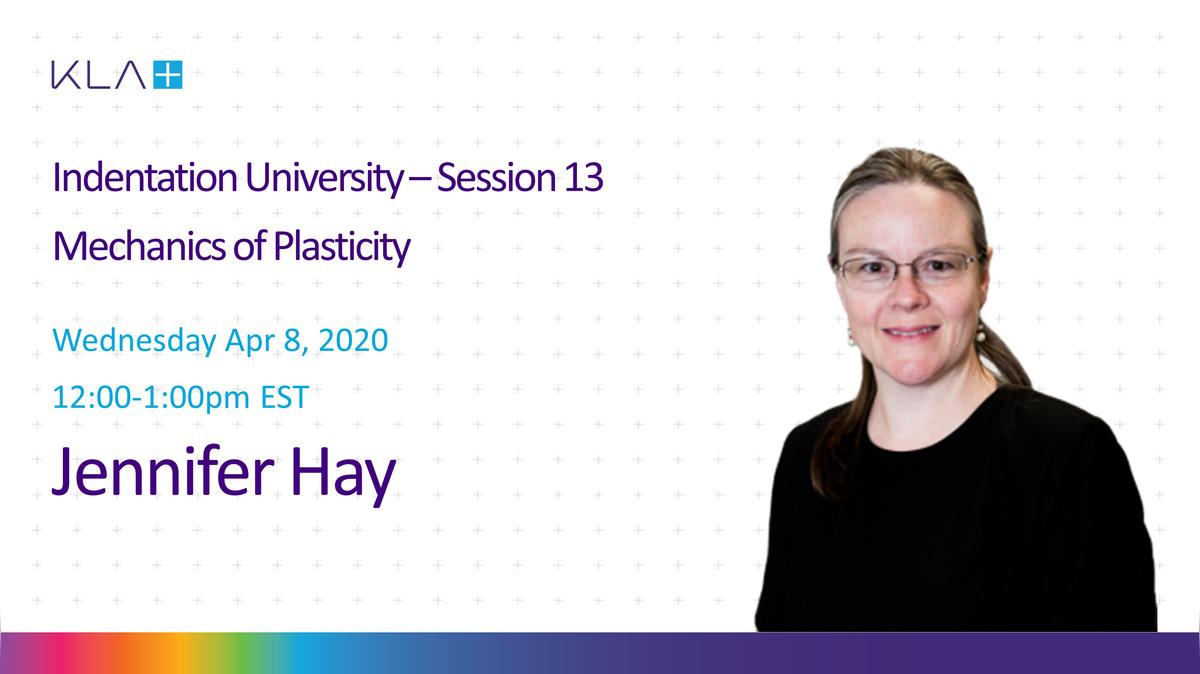
Valid hardness measurements require actually causing plasticity. Thus, we must know the threshold and locus for the onset of plasticity. In this session, we use the Tresca criterion to understand the onset of plasticity for both Hertzian and conical indentation. These criteria guide our understanding of the minimum depth at which one can measure a meaningful hardness.